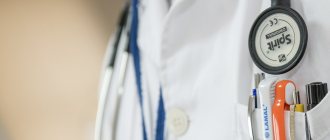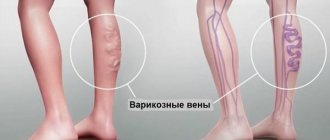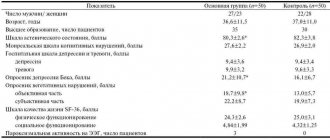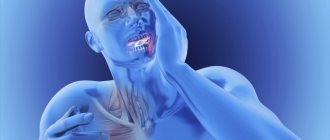The food consumed by a person is first crushed in the mouth, moistened with saliva and passing through the digestive system, converted into feces in the large intestine. Various sections of the gastrointestinal tract are responsible for the gradual digestion and absorption of nutrients.
The composition of feces can indicate not only disturbances in the digestive process, but also indicate which part of the gastrointestinal tract has ceased to function normally. Therefore, in order to diagnose some diseases, the doctor resorts to prescribing a stool analysis - a coprogram. When do muscle fibers appear in feces?
General analysis (coprogram)
- 2 days before collecting biomaterial, discard tomatoes, tomato juice, pasta, beets, blueberries, pomegranates and other vegetables and fruits containing dyes.
- For 3 days, stop taking antibiotics, laxatives, and drugs that cause changes in intestinal motor function. Do not use rectal suppositories, ointments, or oils.
- Do not eat exotic fruits, vegetables and foods that are not typical for your diet as a whole. Do not overeat, exclude fatty, spicy, pickled foods.
- If you are taking medications containing iron and bismuth, they must be discontinued 2 days before stool collection.
Attention. After radiography with a contrast agent (barium), collect feces for coprogram no earlier than 7–10 days after the examination. Women are not recommended to take the test during menstruation.
Procedure for collecting stool:
Collect stool for examination in the morning, on an empty stomach. If this is difficult, you can prepare the sample in advance, but no more than 8 hours before submitting it to the laboratory. In this case, store the sample in the refrigerator (do not freeze!).
- Carry out hygiene procedures and first urinate in the toilet and flush.
- Place sterile paper (or an ironed sheet) or a disposable plastic plate in the bowl or bottom of the toilet and perform a bowel movement.
- Collect feces immediately after defecation from different places in a single portion with a special spoon mounted in the lid of a plastic container in a volume of 1–2 g (no more than 1/3 of the container’s volume). Avoid contact with urine and pieces of undigested food.
- Deliver the sample to the laboratory on the day of collection. Before delivering the sample to the laboratory, the container with stool should be kept in the refrigerator at 2–4 °C. Storage at 2-8 °C is allowed - up to 72 hours.
General stool analysis
Interpretation of the results of the study “General stool analysis”
Interpretation of test results is for informational purposes only, is not a diagnosis and does not replace medical advice.
Reference values may differ from those indicated depending on the equipment used, the actual values will be indicated on the results form. Feces in infants have their own characteristics; in the first 2-3 days after birth, the child excretes original feces (meconium), which in its characteristics differs significantly from the usual feces of both children and adults. The feces of breastfed or bottle-fed infants also have their differences.
Original feces (meconium). Meconium passage occurs 8-10 hours after birth and continues for 2-3 days. The consistency of meconium is sticky, viscous, thick, dark green in color, no odor; pH 5.0-6.0; the reaction to bilirubin is positive. Meconium is recommended to be examined in maternity hospitals to diagnose the intestinal form of cystic fibrosis in newborns.
Feces of a healthy baby during breastfeeding. Feces are a homogeneous, unformed mass, semi-viscous or semi-liquid, golden yellow, yellow or yellow-green in color with a slightly sour odor, pH 4.8-5.8. The reaction to bilirubin remains positive until 5 months of age, then, in parallel with bilirubin, stercobilin begins to be detected as a result of the restorative effect of the normal bacterial flora of the colon. By 6-8 months of age, only stercobilin is detected in the feces.
Microscopic examination of feces against the background of detritus reveals single drops of neutral fat and a meager amount of fatty acid salts. There is a small amount of mucus in the stool; the mucus contains no more than 8-10 leukocytes in the field of view.
Feces of a healthy baby with artificial feeding. The color of stool is light yellow or pale yellow, when standing in air it becomes gray or colorless, but can take on brown or yellowish-brown shades depending on the nature of the food, pH 6.8-7.5 (neutral or slightly alkaline reaction). The smell is unpleasant, slightly putrid due to the rotting of cow's milk casein. Microscopic examination reveals a slightly increased amount of fatty acid salts. In a meager amount of mucus mixed with feces, single leukocytes are found.
The table shows changes in coprogram in adults with various disorders of the digestive system.
| Insufficiency of gastric digestion | Macroscopic examination: consistency - stool is dense or mushy (formed or unformed); color - dark brown; the smell is putrid. Chemical research: pH >7.5; protein - yes; bilirubin - absent; stercobilin - present. Microscopic examination: muscle fibers without striations - in moderate or large quantities; muscle fibers with striations - in moderate quantities; connective tissue - in moderate or large quantities; indigestible plant fiber - in large quantities; digestible plant fiber - in large quantities; soap - in small quantities; starch - in small quantities; iodophilic flora - in small quantities. |
| Pancreatic insufficiency | Macroscopic examination: consistency - ointment-like; color - grayish-yellow; the smell is foul. Chemical research: pH >7.5; protein - yes; bilirubin - absent; stercobilin - present. Microscopic examination: muscle fibers without striations - in moderate or large quantities; muscle fibers with striations - in moderate quantities; connective tissue - in small quantities; indigestible plant fiber - in moderation; digestible plant fiber - in moderation; neutral fat - in large quantities; fatty acids - in small quantities; soap - in moderation; starch - in small quantities; iodophilic flora - in small quantities. |
| Lack of bile flow | Macroscopic examination: consistency - hard or ointment-like; color - grayish-white; the smell is foul. Chemical research: pH <7.0; protein - yes; bilirubin - absent; stercobilin is absent. Microscopic examination: muscle fibers with striations - in moderate quantities; muscle fibers without striations - in small quantities; indigestible plant fiber - in small quantities; digestible plant fiber - in small quantities; neutral fat - in small quantities; fatty acids - in small quantities; soap - in small quantities; starch - in small quantities. |
| Digestive insufficiency in the small intestine | Macroscopic examination: consistency - liquid; yellow color; the smell is weak. Chemical research: pH >7.5; protein - yes; bilirubin - present; stercobilin - present. Microscopic examination: muscle fibers without striations - in moderate quantities; muscle fibers with striations - in small quantities; indigestible plant fiber - in large quantities; digestible plant fiber - in large quantities; neutral fat - in moderation; fatty acids - in moderation; soap - in moderation; starch - in large quantities; iodophilic flora - in small quantities. |
| Digestive insufficiency in the large intestine: | |
| fermentative dyspepsia | Macroscopic examination: consistency - mushy, foamy; yellow color; the smell is sour. Chemical research: pH <7.0; protein - yes; bilirubin - absent; stercobilin - present. Microscopic examination: muscle fibers without striations - in small quantities; muscle fibers with striations - in small quantities; indigestible plant fiber - in small quantities; digestible plant fiber - in large quantities; neutral fat - in small quantities; fatty acids - in small quantities; soap - in small quantities; starch - in large quantities; iodophilic flora - in large quantities; mucus - in small quantities. |
| putrefactive dyspepsia | Macroscopic examination: consistency - liquid; color - dark brown; the smell is putrid. Chemical research: pH >7.5; protein - yes; bilirubin - absent; stercobilin - present. Microscopic examination: muscle fibers without striations - in small quantities; muscle fibers with striations - in small quantities; indigestible plant fiber - in small quantities; digestible plant fiber - in small quantities; neutral fat - in small quantities; fatty acids - in small quantities; soap - in small quantities; starch - in small quantities; iodophilic flora - in small quantities; mucus - in small quantities. |
| Inflammatory process in the large intestine | |
| colitis with constipation | Macroscopic examination: consistency - hard (sheep feces); color - dark brown; the smell is putrid. Chemical research: pH >7.5; protein - yes; bilirubin - absent; stercobilin - present. Microscopic examination: muscle fibers without striations - in small quantities; indigestible plant fiber - in small quantities; soap - in small quantities; mucus - in moderation. |
| colitis with diarrhea | Macroscopic examination: consistency - mushy or liquid; color - dark brown; the smell is sour. Chemical research: pH <7.0; protein - yes; bilirubin - absent; stercobilin - present. Microscopic examination: muscle fibers without striations - in small quantities; muscle fibers with striations - in small quantities; indigestible plant fiber - in small quantities; digestible plant fiber - in large quantities; neutral fat - in small quantities; fatty acids - in small quantities; soap - in small quantities; starch - in large quantities; iodophilic flora - in large quantities; mucus - in small quantities. |
| dysentery, ulcerative colitis | Macroscopic examination: consistency - mushy or liquid; color - dark brown or creamy; the smell is not strong. Chemical research: pH >7.5; protein - yes; bilirubin - absent; stercobilin - present. Microscopic examination: muscle fibers without striations - in small quantities; muscle fibers with striations - in small quantities; indigestible plant fiber - in small quantities; digestible plant fiber - in small quantities; soap - in small quantities; mucus - in small quantities; in mucus - erythrocytes, leukocytes. |
A general stool analysis (coprogram) is an auxiliary study. The study is most often indicative in nature; if a digestive disorder is suspected, additional laboratory tests (biochemical, serological, bacteriological) and instrumental studies (fibrogastroscopy, colonoscopy, ultrasound of the abdominal organs, etc.) should be carried out.
Dysbacteriosis, intestinal group
To obtain the correct result, material for research is taken before the start of antibacterial therapy or in the intervals between courses of treatment, but not earlier than 2 weeks after its completion.
Attention Do not collect feces from diapers. For infants, collect material from a sterile diaper or pre-ironed onesies. If liquid feces are collected, it can be collected by placing an oilcloth under the baby.
Collection rules
- Feces should be collected in the morning, on an empty stomach.
- Carry out hygiene procedures and first urinate in the toilet and flush.
- Place sterile paper (or an ironed sheet) or a disposable plastic plate in the bowl or bottom of the toilet and perform a bowel movement.
- Collect feces immediately after defecation from different places in a single portion with a special spoon mounted in the lid of a plastic container in a volume of 1–2 g (no more than 1/3 of the container’s volume). Avoid contact with urine and pieces of undigested food.
- Deliver to the laboratory on the day of collection.
The sample can be stored for no more than 2 hours at room temperature; no more than 6 hours at 2-8 °C, more than 6 hours - frozen.
What can a microscopic examination of stool tell you?
Coprogram: decryption
The absorption of food is a complex mechanism of interaction between various organs of the human digestive system. It begins in the oral cavity and proceeds throughout the digestive tract, right up to the anus. Food processing occurs not only at the mechanical level, but also at the chemical level - as a result of the action of gastric juice and various enzymes on nutrients.
Using a microscopic examination of stool, it is possible to determine which foods eaten by the patient were poorly digested. Based on the information received, the specialist can determine what kind of digestive problems a person has.
Feces in normal form are a homogeneous mixture of various substances, which consists of products obtained as a result of secretion and excretion of the gastrointestinal tract, remnants of undigested or poorly digested food, particles of the upper intestinal tissues and its microflora. When carrying out a coprogram, the homogeneity of feces is determined as detritus. With normal functioning of the gastrointestinal tract, food is processed well and detritus has a more uniform appearance.
If any disorders develop in the patient’s digestive system, food is not fully digested, so undigested remains of consumed foods begin to appear in the stool. Thus, among the remains of animal products, fats and muscle fibers can be found in feces.
Plant foods are represented in the analysis in the form of fiber and starch. All these components, present to varying degrees in the analysis material, can tell about specific diseases of the patient’s digestive system. The quality of a person’s life depends on the efficiency of the body’s digestive system. Food is the main source of various nutrients that the body needs to meet all its needs.
Microscopic examination of stool can tell you how efficiently your digestive system is doing its job. Depending on the presence of various components in the stool, the doctor diagnoses this or that deviation from the norm and determines its cause.
Protozoa and helminth eggs
To obtain the most reliable results, three stool examinations are recommended with an interval of 3–7 days.
Attention You cannot collect stool earlier than 3 days after an enema, an X-ray examination of the stomach and intestines, or a colonoscopy. The day before, do not take laxatives and drugs that affect intestinal motility (belladonna, pilocarpine), activated carbon, iron, copper, bismuth, barium sulfate, use fat-based rectal suppositories. Women should not collect stool during menstruation.
Collection rules
- Feces should be collected in the morning, on an empty stomach. If this is difficult, you can prepare the sample in advance, but no more than 8 hours before submitting it to the laboratory. In this case, the sample should be stored in the refrigerator (do not freeze!).
- Carry out hygiene procedures and first urinate in the toilet and flush.
- Place sterile paper (or an ironed sheet) or a disposable plastic plate in the bowl or bottom of the toilet and perform a bowel movement.
- Collect feces immediately after defecation from different places in a single portion with a special spoon mounted in the lid of a plastic container in a volume of 1–2 g (no more than 1/3 of the container’s volume). Avoid contact with urine, water and pieces of undigested food;
- Deliver to the laboratory on the day of collection.
Macroscopic examination
Quantity
In pathology, the amount of feces decreases with prolonged constipation caused by chronic colitis, peptic ulcers and other conditions associated with increased absorption of fluid in the intestines. With inflammatory processes in the intestines, colitis with diarrhea, and accelerated evacuation from the intestines, the amount of feces increases.
Consistency
Thick consistency - with constant constipation due to excessive absorption of water. Liquid or mushy consistency of stool - with increased peristalsis (due to insufficient absorption of water) or with abundant secretion of inflammatory exudate and mucus by the intestinal wall. Ointment-like consistency - in chronic pancreatitis with exocrine insufficiency. Foamy consistency - with enhanced fermentation processes in the large intestine and the formation of a large amount of carbon dioxide.
Form
The form of feces in the form of “large lumps” - when feces remain in the colon for a long time (hypomotor dysfunction of the colon in people with a sedentary lifestyle or who do not eat rough food, as well as in cases of colon cancer, diverticular disease). The form in the form of small lumps - “sheep feces” indicates a spastic state of the intestines, during fasting, stomach and duodenal ulcers, a reflex nature after appendectomy, with hemorrhoids, anal fissure. Ribbon or “pencil” shape - for diseases accompanied by stenosis or severe and prolonged spasm of the rectum, for rectal tumors. Unformed feces are a sign of maldigestion and malabsorption syndrome.
Color
If staining of stool by food or drugs is excluded, then color changes are most likely due to pathological changes. Grayish-white, clayey (acholic feces) occurs with obstruction of the biliary tract (stone, tumor, spasm or stenosis of the sphincter of Oddi) or with liver failure (acute hepatitis, cirrhosis of the liver). Black feces (tarry) - bleeding from the stomach, esophagus and small intestine. Pronounced red color - with bleeding from the distal parts of the colon and rectum (tumor, ulcers, hemorrhoids). Gray inflammatory exudate with fibrin flakes and pieces of the colon mucosa (“rice water”) - with cholera. The jelly-like character is deep pink or red in amoebiasis. In typhoid fever, the stool looks like “pea soup.” With putrefactive processes in the intestines, the feces are dark in color, with fermentative dyspepsia - light yellow.
Slime
When the distal colon (especially the rectum) is affected, the mucus occurs in the form of lumps, strands, ribbons, or a glassy mass. With enteritis, the mucus is soft, viscous, mixing with feces, giving it a jelly-like appearance. Mucus, covering the outside of formed feces in the form of thin lumps, occurs with constipation and inflammation of the large intestine (colitis).
Blood
When bleeding from the distal parts of the colon, the blood is located in the form of streaks, shreds and clots on formed stool. Scarlet blood occurs when bleeding from the lower parts of the sigmoid and rectum (hemorrhoids, fissures, ulcers, tumors). Black feces (melena) occur when there is bleeding from the upper digestive system (esophagus, stomach, duodenum). Blood in the stool can be found in infectious diseases (dysentery), ulcerative colitis, Crohn's disease, disintegrating colon tumors.
Pus
Pus on the surface of the stool occurs with severe inflammation and ulceration of the mucous membrane of the colon (ulcerative colitis, dysentery, disintegration of an intestinal tumor, intestinal tuberculosis), often together with blood and mucus. Large amounts of pus without mucus are observed when opening paraintestinal abscesses.
Leftover undigested food (lientorrhea)
The release of undigested food residues occurs with severe insufficiency of gastric and pancreatic digestion.
Bacteriology
To obtain a reliable result, material for research is taken before the start of antibacterial therapy or in the intervals between courses of treatment, but not earlier than 2 weeks after its completion.
- 3-4 days before the study, it is necessary to stop taking laxatives, castor and petroleum jelly and stop administering rectal suppositories.
Attention: Feces obtained after an enema, as well as after taking barium (during an X-ray examination), are not suitable for research.
Collection rules
- Feces should be collected in the morning, on an empty stomach.
- Carry out hygiene procedures and first urinate in the toilet and flush.
- Place sterile paper (or an ironed sheet) or a disposable plastic plate in the bowl or bottom of the toilet and perform a bowel movement.
- Collect feces immediately after defecation from different places in a single portion with a special spoon mounted in the lid of a plastic container in a volume of 1–2 g (no more than 1/3 of the container’s volume). Avoid contact with urine and pieces of undigested food.
- Deliver to the laboratory on the day of collection.
PCR studies
Collection rules
- Feces should be collected in the morning, on an empty stomach.
- Carry out hygiene procedures and first urinate in the toilet and flush.
- Place sterile paper (or an ironed sheet) or a disposable plastic plate in the bowl or bottom of the toilet and perform a bowel movement.
- Collect feces immediately after defecation from different places in a single portion with a special spoon mounted in the lid of a plastic container in a volume of 1–2 g (no more than 1/3 of the container’s volume). Avoid contact with urine and pieces of undigested food.
- Deliver to the laboratory on the day of collection.
Culture for microflora and sensitivity to antibiotics
3-4 days before the study, it is necessary to stop taking laxatives, castor and vaseline oil, and stop administering rectal suppositories. Feces obtained after an enema, as well as after taking barium (during X-ray examination) are not accepted for examination!
Attention: Feces are collected before starting treatment with antibacterial and chemotherapy drugs.
Collection rules
- First urinate in the toilet and flush.
- Place sterile paper (or an ironed sheet) or a disposable plastic plate in the bowl or bottom of the toilet and perform a bowel movement.
- Collect feces immediately after defecation from different places in a single portion with a special spoon mounted in the lid of a plastic container in a volume of 1–2 g (no more than 1/3 of the container’s volume). Avoid contact with urine and pieces of undigested food.
- Deliver to the laboratory on the day of collection. If it is impossible to quickly deliver the sample to the laboratory, you can store it in the refrigerator for no more than 4 hours at 2-8 °C.
general characteristics
Coprogram - analysis of the physical, chemical and microscopic characteristics of feces. The method is an important diagnostic component for identifying dysfunctions of the stomach, intestines, pancreas, and liver. Macroscopic examination of feces includes the study of physical characteristics: quantity, consistency, color, smell, presence of impurities. During microscopic examination of stool, native and colored preparations are examined. The method is used at the diagnostic stage and to monitor the effectiveness of treatment.
For carbohydrates
- Carry out hygiene procedures and first urinate in the toilet and flush.
- Place sterile paper (or an ironed sheet) or a disposable plastic plate in the bowl or bottom of the toilet and perform a bowel movement.
- Collect feces immediately after defecation from different places in a single portion with a special spoon mounted in the lid of a plastic container in a volume of 1–2 g (no more than 1/3 of the container’s volume). Avoid contact with urine and pieces of undigested food.
- Deliver the sample to the laboratory within 4 hours.
Attention Storing a stool sample for more than 4 hours, including in the refrigerator, is not allowed.






